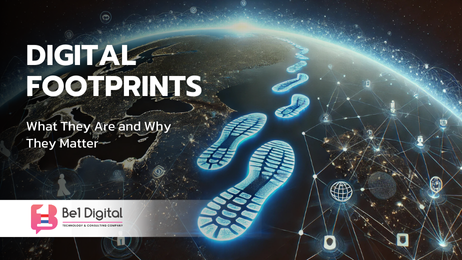
What is a Digital Footprint?
Every time you go online—whether you're posting on social media, shopping, or just browsing—you’re leaving a trail of digital breadcrumbs. This is your digital footprint, a collection of data that builds a profile of who you are in the online world.
Digital footprints come in two forms:
-
Active Digital Footprint – Information you intentionally share, like posts, comments, and online registrations.
-
Passive Digital Footprint – Data collected behind the scenes, such as browsing history, location tracking, and cookies.
Why Should You Care About Your Digital Footprint?
Your digital footprint is more than just a history of your online activity—it shapes your reputation, influences your security, and affects how businesses and even employers perceive you. Here’s why managing it is crucial:
-
1. Your Reputation is Online – Employers, clients, and even acquaintances often look up online profiles before making decisions.
-
2. Privacy & Security Risks – Hackers and cybercriminals can use personal data for scams, identity theft, and cyberattacks.
-
3. Targeted Ads & Data Tracking – Ever wonder why you see ads for things you just searched for? Companies track online behavior to personalize ads and content.
-
4. Legal & Compliance Issues – Data privacy laws exist, but it’s still up to you to manage and protect your own digital identity.
Why Should You Care About Your Digital Footprint?
If you want to keep your online presence in check and your personal information secure, follow these steps:
1. Check What’s Out There
- Google yourself to see what information is publicly available.
- Use reputation management tools to monitor where your name appears online.
2. Tighten Your Privacy Settings
2. Tighten Your Privacy Settings
- Adjust social media privacy controls to limit who can see your posts and personal details.
- Turn off location tracking and limit what apps can access on your devices.
3. Think Before You Post or Share
3. Think Before You Post or Share
- Avoid sharing sensitive information like your address, phone number, or financial details.
- Consider how your posts may be perceived in the future—once something is online, it can be hard to erase.
4. Clean Up Old Accounts and Data
4. Clean Up Old Accounts and Data
- Contact websites to request the removal of outdated or unwanted information.
- Delete inactive or unused accounts to reduce digital exposure.
5. Strengthen Your Security
5. Strengthen Your Security
- Enable two-factor authentication (2FA) to add an extra layer of security to your accounts.
- Use strong, unique passwords for different sites and store them in a password manager.
- Keep software and security programs updated to protect against evolving threats.

